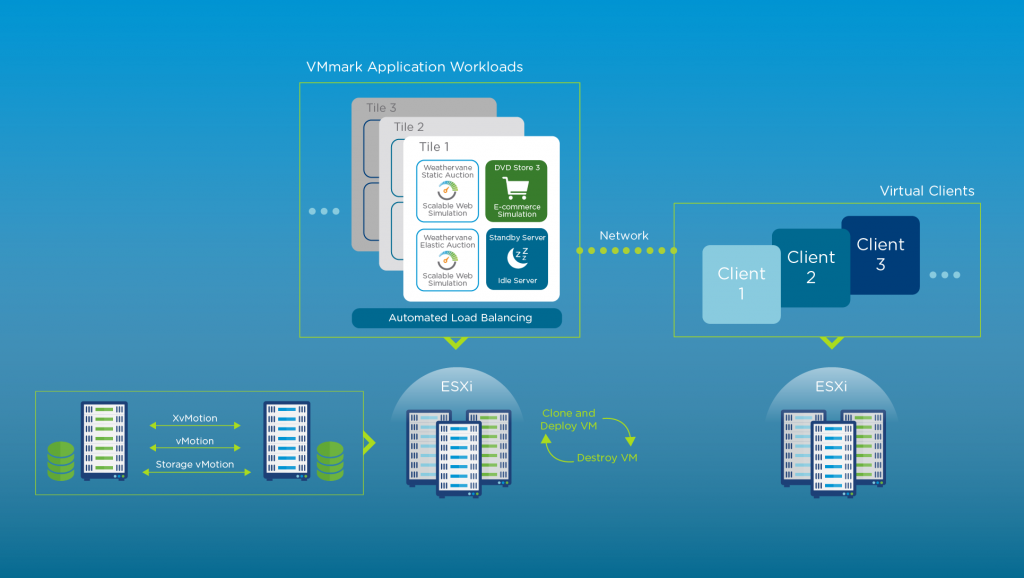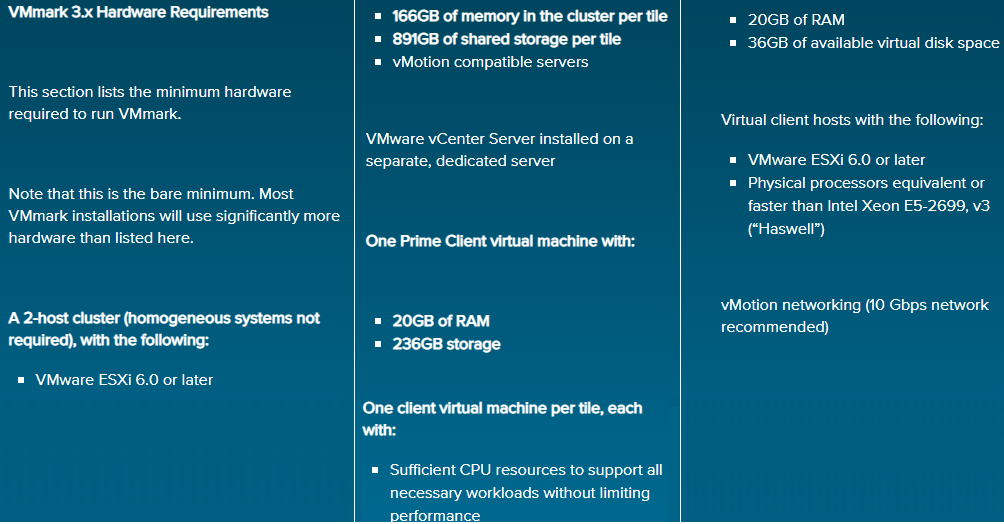
VMmark: The Industry’s First Virtualization Benchmark
VMmark is a free tool that hardware vendors, virtualization software vendors and other organizations use to measure the performance and scalability of applications running in virtualized environments. This virtualization benchmark software features a novel tile-based scheme for measuring application performance and provides a consistent methodology that captures both the overall scalability and individual application performance
What’s New?
This release adds support for persistent memory, improves workload scalability, and better reflects secure customer environments by increasing side-channel vulnerability mitigation requirements.
Please note that VMmark 3.0 will end of life on March 15th, 2019.
VMmark 3: A Web-Scale Multi-Server Virtualization Platform Benchmark

The VMmark benchmark
Why a Virtualization Platform Benchmark?
A cloud environment typically collects several diverse workloads onto a virtualization platform — a collection of physical servers accessing shared storage and network resources. Traditional single-workload performance and scalability benchmarks for non-virtualized environments were developed with neither virtual machines nor cloud environments in mind. Even single-server virtualization benchmarks did not fully capture the complexities of today’s virtualized data centers.
VMmark 1.x pioneered single-server virtualization benchmarking with its unique tile-based multi-application design. VMmark 2.xexpanded this to multiple servers and platform-level workloads. Applications have evolved since then, and VMmark 3 addresses these changes in application architecture and platform-level operations. More than ever before, users are running highly scalable workloads, often referred to as third platform applications, and increasingly complex OLTP workloads.
VMmark 3 features a highly automated setup and tile-cloning process that makes benchmark deployment fast and easy, with the need for very little manual intervention. VMmark 3 uses free or open-source software throughout, eliminating the need to purchase software licenses, and the VMmark .ova includes all the needed software in one downloadable template.
System Requirements

Getting Started With VMmark 3
To get started with VMmark, follow these steps: